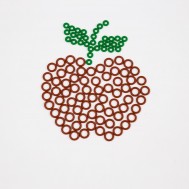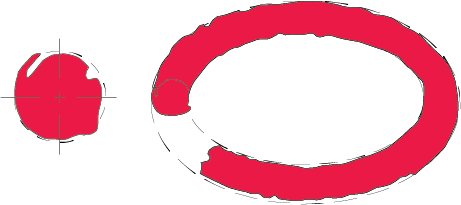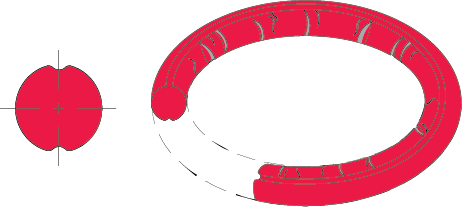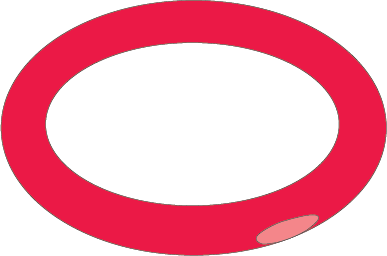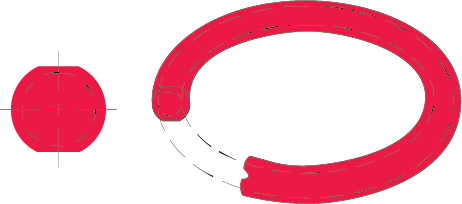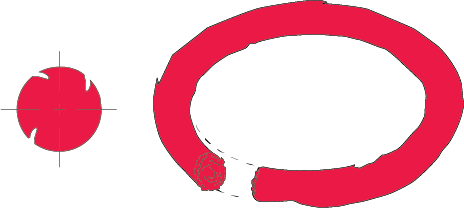O-Ring failure can occur through a combination of environmental factors, adverse application effects, and material selection. Through the various types of o-ring failure, common themes of improper gland design, o-ring size, and material seem to be at the heart of complications.
When designing an o-ring for your application, it’s important to be aware of the possible complications your seal may experience. Here’s a closer look at how to identify five common reasons for o-ring failure.
1. Extrusion and Nibbling
Extrusion and nibbling typically occur in high pressure systems and can be identified as the appearance of small bites (nibbles) taken from the o-ring on the low pressure side. This can be caused by:
- Excessive clearances or system pressure
- O-Ring material that is too soft
- O-Ring degradation by the system fluid
- Improper machining of the gland with sharp edges
- Size of the o-ring is too large for the gland
To prevent extrusion, be sure to use back-up o-rings. To reinforce your seal and improve strength, consider using a composite seal bonded to metal. Always make sure that the right material is selected to ensure it is hard enough, can handle high pressure, and is chemically compatible with system fluids.
2. Heat Hardening and Oxidation
Both dynamic and static seals can experience heat hardening and oxidation. These defects appear as pitted or cracked o-rings, and are often accompanied by the flatness of a high compression set. Heat hardening and oxidation can quickly lead to o-ring failure, and these issues are commonly caused by:
- Temperature that is too high or too low, causing elastomer hardening
- Evaporation of plasticizers
- Cracking from oxidation
To prevent o-ring failure, select an o-ring material with high temperature capabilities. If possible, lower the operating temperature of the application to prevent hardening.
3. Installation Damage
When installing static and dynamic seals, it’s possible to damage the material with cuts, notches, or a peeled surface. These defects are often caused by:
- Sharp edges on the mating components of the gland
- Sharp threads that catch the o-ring during assembly
- An o-ring ID that is too large on the piston or too small on the rod
- Twisting or pinching the o-ring during installation
- Low tear-resistant material, such as silicone
To prevent installation damage, be sure to break down all sharp edges and cover threads or tubes with tape when installing. Lubrication during assembly is important to ensure that the o-ring slides into place correctly without force.
4. Excessive Swell
Excessive swell is easily identified by an increase in seal dimensions. This can result in improper sizing between the seal and the gland, which will ultimately lead to o-ring failure. Dynamic applications are especially at risk because friction accelerates seal failure. O-Rings naturally absorb surrounding fluids like a sponge. However, it can swell to the point of malfunction because:
- Incompatibility between the sealing material and environment
- Chemical incompatibility
- High humidity
To prevent excessive swell, be sure to use an o-ring material that is compatible with its environment. Take a look at our Chemical Compatibility Guide for more information about the best environments for each material.
5. Spiral Failure
Spiral failure is generally found in long stroke hydraulic piston seals. This failure can be identified b the surface of the o-ring exhibiting a series of deep, spiral 45 angle cuts. Spiral failure often occurs when segments of the o-ring slide while other segments simultaneously roll. Because of this motion, the o-ring can get caught on another component or twist against a cylinder wall. This is typically caused by:
- Uneven surface finishes
- An inadequate amount of lubrication
- An o-ring material that is too soft
- Stroke speeds that are too slow
To prevent spiral failure, consider using an internally lubricated o-ring. This will allow the seal to always have the proper amount of lubrication. It’s also important to ensure that the material used has the proper hardness for the application. Check out our Material Selection Guide for more information about the specifications for each elastomer.
